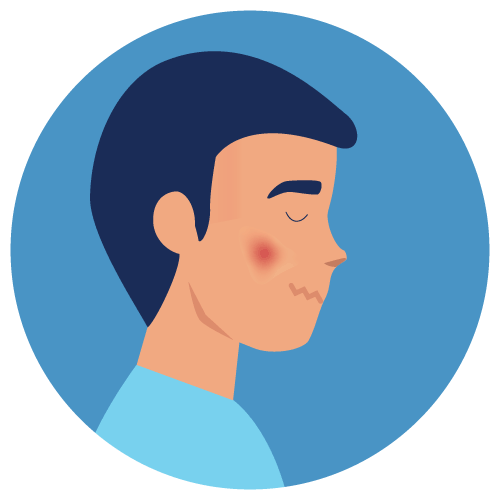| Name | Dioxybenzone |
| Classes |
Anticancer/Antineoplastic Agent |
| Diseases |
Skin Disorder Sunscreen |
Dioxybenzone
Dioxybenzone is a chemical compound that belongs to the class of organic benzophenones. It is a sunscreen agent that absorbs ultraviolet (UV) light, particularly UVA radiation. Dioxybenzone works by absorbing the energy of UVA radiation and converting it into a less harmful form of energy. It is primarily used as a photoprotective agent in sunscreens, which help to prevent sunburn, photoaging, and skin cancer.
The recommended dosage and administration of dioxybenzone depend on the patient's age and the specific sunscreen product used. Generally, dioxybenzone-containing sunscreens should be applied liberally to all exposed skin areas at least 15-30 minutes before sun exposure and reapplied every 2 hours or after swimming or sweating.
For infants under 6 months of age, sunscreen use should be avoided or minimized, and physical sun protection such as clothing, hats, and umbrellas should be used instead.
For children and adults over 6 months of age, the American Academy of Dermatology recommends using a broad-spectrum sunscreen with an SPF (sun protection factor) of 30 or higher and reapplying every 2 hours or after swimming or sweating.
The most common adverse reactions associated with dioxybenzone include skin irritation, allergic reactions, and contact dermatitis. Other less common side effects may include:
- Acne
- Rash
- Dry skin
- Burning sensation
- Itching
- Redness
- Hypersensitivity and allergic reactions: Some individuals may develop an allergic reaction or hypersensitivity to dioxybenzone or other sunscreen ingredients. Patients who experience symptoms such as hives, rash, swelling, or difficulty breathing should discontinue use of the product and seek medical attention.
- Photosensitivity: Dioxybenzone-containing sunscreens may increase the risk of sunburn or other UV-related skin damage if not applied properly or reapplied as directed. Patients should avoid excessive sun exposure and use physical sun protection in addition to sunscreen.
- Skin irritation: Some individuals may experience skin irritation or sensitivity with the use of dioxybenzone-containing sunscreens. Patients should discontinue use of the product if they develop symptoms such as redness, itching, burning, or stinging.
- Eye irritation: Dioxybenzone-containing sunscreens may cause eye irritation or stinging if they come into contact with the eyes. Patients should avoid contact with the eyes and rinse thoroughly with water if this occurs.
Contraindication
Dioxybenzone is contraindicated in patients hypersensitive to oxybenzone or any component of the formulation.
None known.
None known.
 Bangla
Bangla English
English




